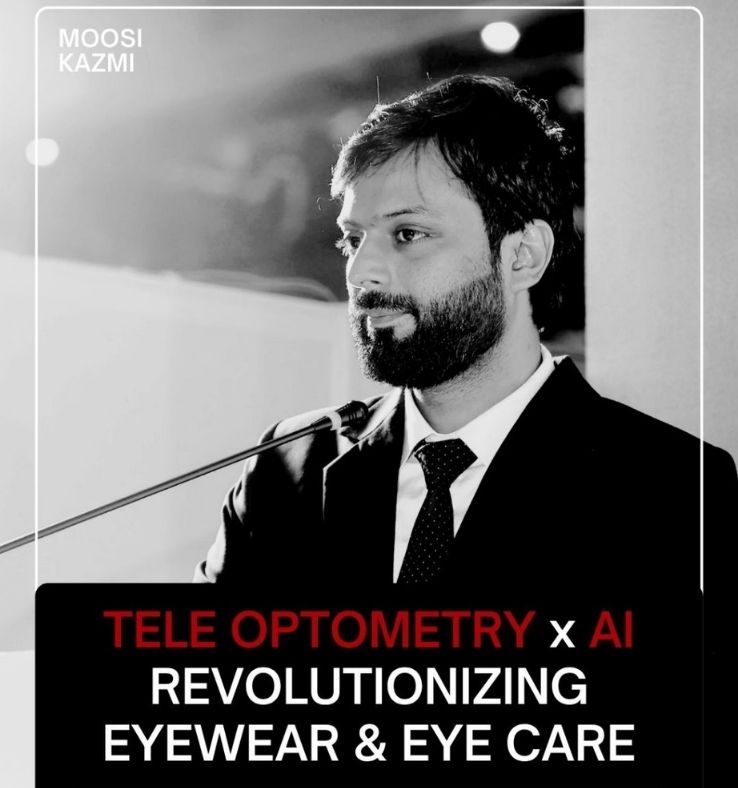VR FOR VISION: A TECHNOLOGY-DRIVEN SOLUTION FOR LOW-VISION
_(Facebook_Post)1.jpg)
STEP INTO Virtual Reality(VR): TRANSFORMING VISION REHABILITATION
Globally, at least 2.2 billion people have vision impairment, that significantly impairs their ability to perform even the simplest of tasks that we often take for granted. Reading, recognizing faces, or navigating through a room can become difficult for them. In this context, it's essential to explore innovative solutions to enhance their quality of life while dealing with challenging reality. A notable 16% of individual injuries were during stair climbing, reflecting the risks and challenges faced in the rehabilitation field.1
|
Figure 1: Virtual reality headset .jpg) |
Virtual Reality (VR) technology can be a solution for that, it offers a revolutionary approach to low vision rehabilitation. VR creates simulation to create a realistic,immersive experience. |
With VR they can feel as if they are physically present in a virtual environment and interact with it. Where low-vision patients can safely train and regain their confidence, significantly reducing the risk of injury. These simulated scenarios serve as a critical preparation phase before on-site rehabilitation, mitigating potential hazards.2
VR: A NEW VISION FOR LOW-VISION
By utilizing VR, low-vision patients can enhance their visual experiences, while trainers can create customized VR experiences for these patients.
VR can be used to simulate real-life scenarios for low-vision patients. VR enables patients to enhance their skills and confidence in completing daily activities without the risk of injury.
VR IS ALREADY USED IN |
UNLOCKING THE POTENTIAL OF VR IN LOW-VISION
• Researchers monitored individuals in a virtual environment with normal and low vision, and by varying the brightness of the display, they were able to significantly increase their recognition of faces, objects, and colors.3
• Our method reframes virtual reality (VR) as a potent training tool, enabling patients to carry out necessary tasks in comfortable surroundings like negotiating stairs, crossing streets, or traveling through different settings safely.
• Beyond training for specific tasks, virtual reality (VR) gives patients the ability to alter their living spaces, improving vision and comfort by simulating scenes with changing lighting, contrast, and color.
• This all-encompassing strategy includes teaching, preparing, and equipping rehabilitation trainers.
CURRENT USE OF VR IN LOW-VISION
• STEREOPSIS TRAINING4 (2016)
• GAMING & RECREATION4 (2016)
• COLOR IDENTIFICATION3 (2020)
• FACE RECOGNITION3 (2020)
HOW VR TRANSFORMS LOW-VISION REHAB
• An innovative approach to low vision rehab.
• Risk-free learning.
• Personalized training regimens.
• Real-time feedback for improvement.
• Recreates familiar environments for practice.
• Build confidence by reducing real-world hazards.
|
Figure 2: Image captured for Virtual reality .jpg) |
TRANSFORMING LEARNING WITH VR
• Remote accessibility.
• Enhanced Understanding.
• Complex data visualization.
• Efficient skill development.
• Trainers can practice in realistic scenarios.
REFERENCE:
World Health Organization. (2019). World report on vision.
Lundälv, J., &Thodelius, C. (2021). Risk of injury events in patients with visual impairments: A Swedish survey study among hospital social workers. Journal of Visual Impairment & Blindness, 115(5), 426-435.
Wiederhold, B. K. (2020). How virtual reality is changing the reality of aging. Cyberpsychology, Behavior, and Social Networking, 23(3), 141-142.
Vedamurthy, I., Knill, D. C., Huang, S. J., Yung, A., Ding, J., Kwon, O. S., ... & Levi, D. M. (2016). Recovering stereo vision by squashing virtual bugs in a virtual reality environment. Philosophical Transactions of the Royal Society B: Biological Sciences, 371(1697).

.jpg)

.jpg)
.jpg)
.jpg)


1.jpg)



.jpg)
.jpg)



_(Instagram_Post).jpg)
.jpg)
_(1080_x_1080_px).jpg)


with_UP_Cabinet_Minister_Sh_Nand_Gopal_Gupta_at_OpticsFair_demonstrating_Refraction.jpg)
with_UP_Cabinet_Minister_Sh_Nand_Gopal_Gupta_at_OpticsFair_demonstrating_Refraction_(1).jpg)

.jpg)








.jpg)



.png)




